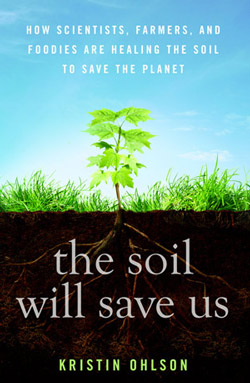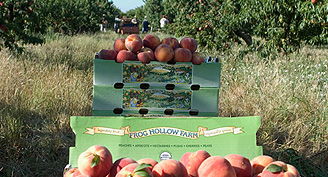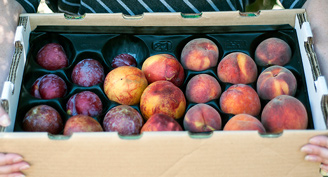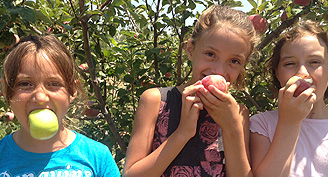When we think of the earth beneath our feet, we generally think we’re on solid ground. But soil is anything but solid. With roughly six billion organisms in a single tablespoon, healthy soil is a vast, dynamic, and hidden microcosmos. In the words of journalist Kristin Ohlson, “We’re standing on something that’s more like a coral reef.”
Ohlson recently spoke at a panel discussion hosted by CUESA called “The Soil Will Save Us.” In researching her book by the same name, she interviewed scientists and farmers who are putting those soil communities to work. She came away with awe and hope for soil’s complexity and its immense potential to heal the planet.
Capturing Carbon
Human activities like burning fossil fuels have led to global warming by increasing the concentration of greenhouse gases, most notably carbon dioxide, in the atmosphere. Reversing climate change is not just a matter of decreasing our dependence on fossil fuels, but also reducing the excess CO2 that is currently in the atmosphere. That’s where soil comes in. Healthy soil captures and stores atmospheric carbon. Through photosynthesis, plants convertCO2 into the food they need to grow. About 40% of that carbon gets deposited into the soil through the plants, where it feeds microorganisms like bacteria, fungi, protozoa, and nematodes. Those creatures, in return, give mineral nutrients to the plants, providing a natural fertilizer. Ohlson calls this process the “ancient partnership between soil microorganisms and plants,” and it is an important part of the carbon cycle. Modern industrial agricultural practices such as monoculture planting, use of chemical fertilizers and pesticides, and tilling have disrupted this natural cycle, decreasing soil health and diversity and releasing harmful CO2 into the atmosphere. “The only way to bring [CO2] down is through plants,” said Ohlson. “That’s the great hope that we have not only for healing our climate, but for also healing all these other environmental ills we have, whether it’s erosion or drought or floods or poor water and air quality.”Farming for the Climate
As scientists warn about the urgency of climate change and California faces its most severe drought on record, some farmers and environmentalists are looking not to the air, but to the earth. “A third of the excess carbon dioxide in atmosphere today is a direct function of how we have managed landscapes for the last 10,000 years,” said Jeff Creque, co-founder of the Marin Carbon Project and director of the Carbon Cycle Institute. And Creque sees responsible soil stewardship as the solution. In 2007, he and his colleagues asked the question, “Can management enhance carbon sequestration in our rangeland soils?” Working with ranches and agricultural organizations in Marin County, they spread half an inch of compost on several sites and quickly saw an increase in plant production, soil moisture, and soil carbon. The Marin Carbon Project’s goal is to implement “carbon farming” practices (like compost application, cover crops, and no-till cultivation) on ranches throughout California. He estimates that if compost were applied to 5% of California’s rangelands, it would offset of 32 to 36 million metric tons of carbon dioxide. As the planet warms and water becomes scarcer, the implications of carbon farming are huge. In addition to mitigating and possibly even reversing climate change, these practices can also lessen the impacts of the drought. “We’re looking at the potential to hold more water in our soils than in all of our state’s reservoirs combined,” Creque said.Healthy Soil, Healthy Farms
 Carbon farming techniques increase microbial life in the soil, which may bring additional benefits for farmers, such as increased fertility and reduced need for chemical fertilizers and pesticides.
Carbon farming techniques increase microbial life in the soil, which may bring additional benefits for farmers, such as increased fertility and reduced need for chemical fertilizers and pesticides.
Heroes of the Underground
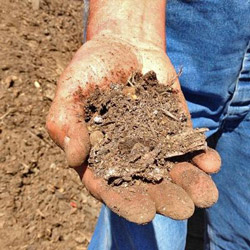 Implementing carbon farming practices on a large scale would require sweeping changes in agricultural policy, which will not come easily. “There’s fear among the more conservative agriculture sector that they’re going to be regulated as a greenhouse gas emitter,” said Creque. “The opportunity to be recognized for greenhouse gas mitigation and reversal of climate change is missing.”
Implementing carbon farming practices on a large scale would require sweeping changes in agricultural policy, which will not come easily. “There’s fear among the more conservative agriculture sector that they’re going to be regulated as a greenhouse gas emitter,” said Creque. “The opportunity to be recognized for greenhouse gas mitigation and reversal of climate change is missing.”

